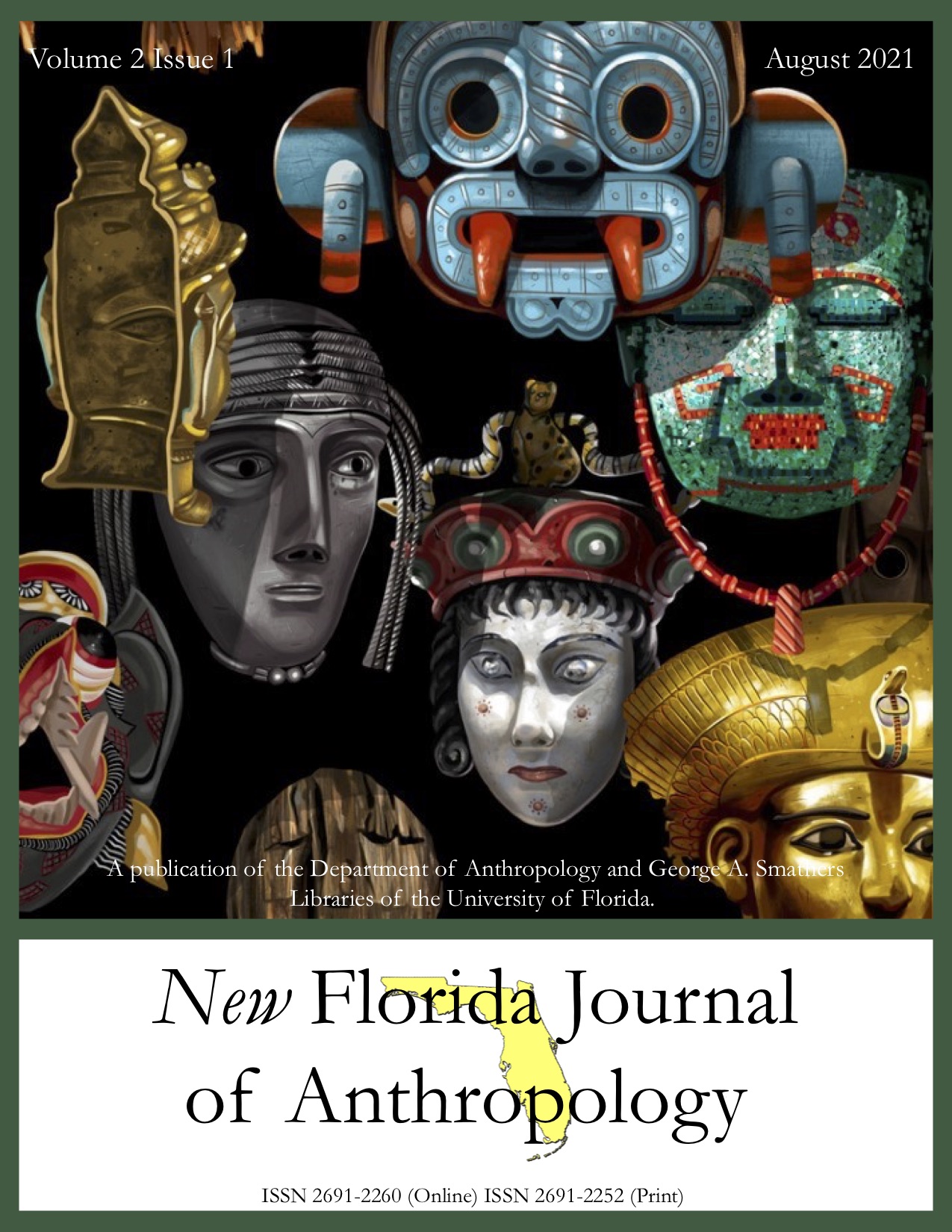Generation of Microclimates From the Differential Decomposition of Textiles in North Central Florida
DOI:
https://doi.org/10.32473/nfja.v2i1.123730Keywords:
Forensic Anthropology, Taphonomy, Postmortem Interval, Textile DecompositionAbstract
The analysis of textiles as trace evidence is an important area of focus in the field of forensic science, because enhanced understanding of the decomposition of textiles may point to more accurate methods for estimating the post mortem interval (PMI) of remains found in association with these materials. This research is especially crucial in areas with unique climates, like the state of Florida. This study examines the generation of microclimates from the differential decomposition of various textile types. This study hypothesized that the decomposition of textiles will generate microclimates with soil properties that differ from those of the surrounding environment, and that different types of textiles will create different microclimates as they decompose. Samples of cotton, UV-proofed cotton, polyester, cotton-polyester blended fabric, ripstop, and wool were buried at four sites on a property in North Central Florida for thirteen weeks, with measures of soil temperature, pH, and moisture level, and weather data collected weekly. Following burial, decomposition of each textile type was scored. Data collected were analyzed in R statistical software. Analysis indicated that the level of degradation differed by textile type but not by site. Textile presence, type of textile, and subsequent decomposition significantly impacted soil pH and moisture at all sites, but did not have a significant effect on soil temperature. The results of this study demonstrate that the decomposition of textiles can create diverse and unique microclimates in the soil environment. When found in association with human remains, presence and type of textile should be considered when estimating decomposition rates and the postmortem interval.
Downloads
Published
Issue
Section
License
By submitting to the New Florida Journal of Anthropology, the author(s) agree to the terms of the Author Agreement. All authors retain copyrights associated with their article contributions and agree to make such contributions available under a CC BY-NC 4.0 license upon publication.
Florida OJ Author Agreement (University of Florida)
The following agreement takes effect upon acceptance of the Submission (“Submission”) for publication in the New Florida Journal of Anthropology:
I hereby grant to the University of Florida (“the University”) the non-exclusive right to retain, reproduce and distribute the Submission in whole or in part, in print and electronic format and in any medium. This agreement does not represent a transfer of copyright to the University.
The University may make and keep multiple copies of the work for purposes of security, backup, preservation and access; and may migrate the work to any medium or format for the purpose of preservation and access.
I represent and warrant to the University that the work is my original work and that I have the authority as sole author or I have the authority on behalf of my co-authors to grant the rights contained in this agreement. I also represent that the work does not, to the best of my knowledge, infringe or violate any rights of others.
I further represent and warrant that I have obtained all necessary rights to permit the University to reproduce and distribute the work, including any third-party material. Alternatively, I represent that my use of any third-party material is allowed because the material is not in copyright or I have performed a fair use analysis and reasonably believe my use is permitted. Any content owned by a third party is clearly identified and acknowledged within the work.
I grant these same rights to New Florida Journal of Anthropology. Additionally, I grant the right to both the University and New Florida Journal of Anthropology to enter into agreements with third-party entities and the rights necessary to host, print, index and abstract the Submission.
Open Access and Self-Archiving
The New Florida Journal of Anthropology follows an open-access publishing model, meaning that all articles will be publicly accessible on the Internet immediately upon publication.Authors may share the submitted manuscript (preprint) of the Submission on the Internet at any point before or after publication, with a citation and link to the final version of record to be added as soon as the issue is available. The author may disseminate the final peer-reviewed version at any point after publication.
Creative Commons License
The New Florida Journal of Anthropology applies a Creative Commons CC BY-NC 4.0 license to encourage sharing and reuse of content and to maximize the impact of published research. By publishing in the New Florida Journal of Anthropology, authors agree that the terms of this license will be applied to the Submission. The George A. Smathers Libraries at the University of Florida (copyright@uflib.ufl.edu) may be able to offer additional information.
By granting this license, authors acknowledge that they have read and agreed to the terms of this agreement.


